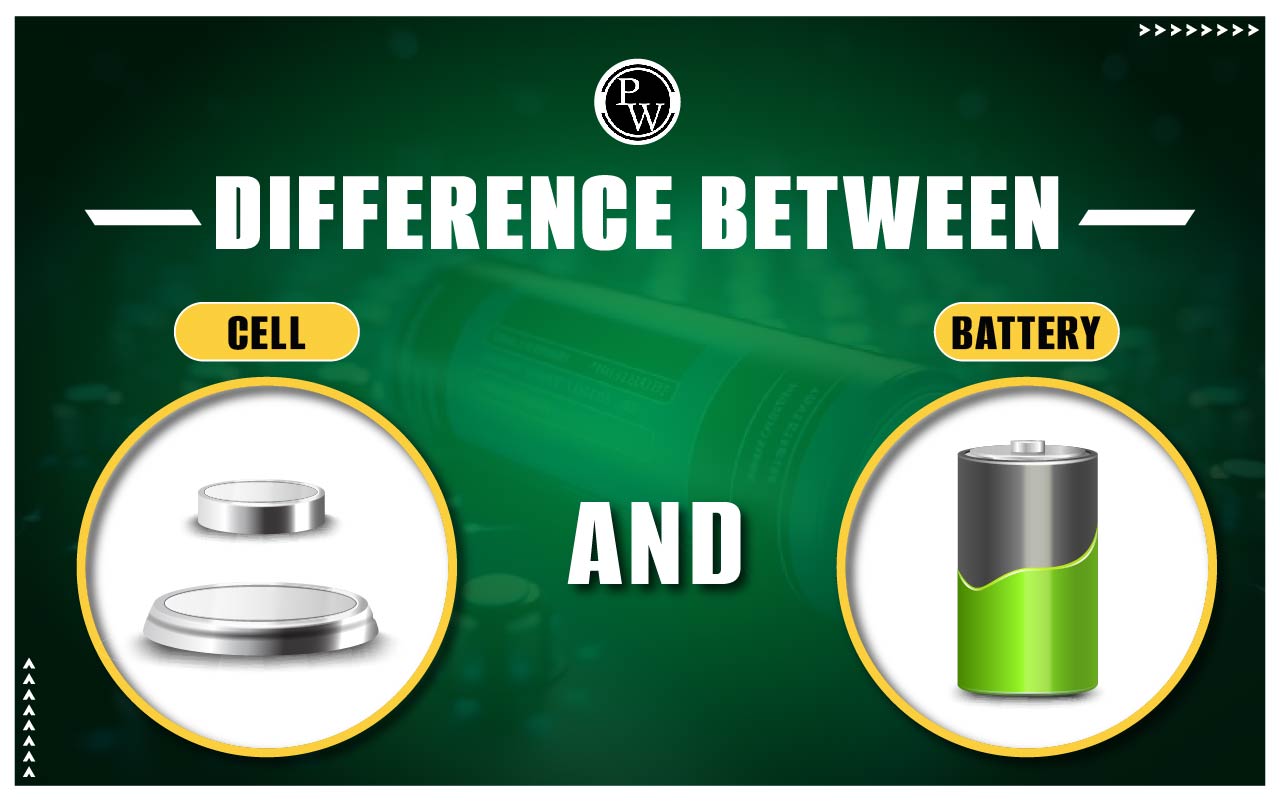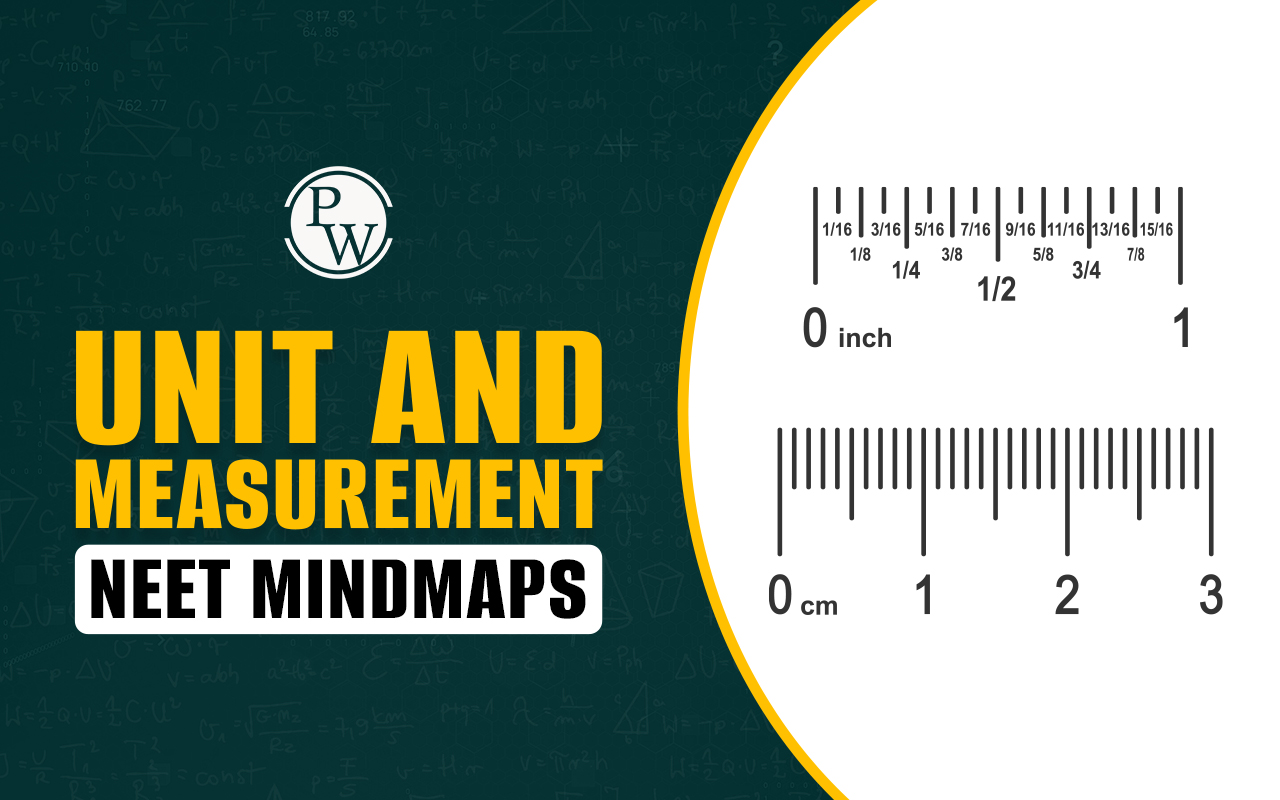

Difference between Cell and Battery: Batteries and cells are awesome inventions of science that make our daily life super easy, especially in gadgets we use every day. They're like the powerhouse of our portable gadgets. Without them, it is hard to imagine today's life.
| NEET Physics Syllabus | NEET Physics Important Questions with Answers |
| NEET Physics Chapter wise Weightage | NEET Physics MCQs |
| NEET Physics Notes | NEET Physics Formulas |
Difference Between Cell and Battery Overview
For NEET aspirants, knowing the basics of cells and batteries is crucial. A cell is like the smallest power unit, changing chemicals into electricity. Batteries are like a group of these cells working together to give more power to the electrical devices. This is the table in which you can compare the functioning of each and its role in producing electrical energy. Check it out for a better understanding of the Difference Between Cell and Battery Overview.| Difference Between Cell and Battery | ||
|---|---|---|
| Parameter | Cell | Battery |
| Definition | A single unit that produces electrical energy. | A collection of cells grouped together. |
| Function | Generates electricity through a chemical reaction. | Combines multiple cells for a stronger and longer-lasting power supply. |
| Components | It has positive and negative ends; and contains chemicals for energy production. | Comprises multiple cells connected in series or parallel. |
| Voltage | Typically, it has a lower voltage (e.g., 1.5V for a single AA battery). | Higher voltage it is the sum of the voltages of individual cells. |
| Capacity | Limited capacity due to being a single unit. | Greater capacity compared to a single cell, as it combines energy from multiple cells. |
| Size | It is smaller in size compared to a battery. | Larger in size compared to a single cell. |
| Examples | Single-use alkaline or rechargeable NiMH cells. | Car batteries, laptop batteries, power banks, and rechargeable AA battery packs. |
Definition of a Cell
A cell is the basic unit that generates electrical energy through a chemical reaction. It has positive and negative ends and contains chemicals, such as electrolytes, that facilitate the production of electricity.Example : A common example of a cell is the alkaline AA battery. It is a single unit that provides a steady supply of electrical power for various devices like remote controls, flashlights, or small electronic gadgets.
Definition of a Battery
A battery is a collection of two or more cells connected in series or parallel. It combines the power of multiple cells to deliver a stronger and more enduring electrical supply.Example : A household example of a battery is the alkaline battery pack often used in TV remotes. It consists of multiple AA or AAA cells connected within the same casing to provide a more extended and robust power source.
Physics Wallah offers a systematic and syllabus-oriented NEET Online Coaching for students who wish to build successful medical careers. Our teachers pay attention to the doubts of each student and provide them with a solution immediately. In our online coaching candidates can avail the benefits of specially crafted study material for those who are aiming for NEET 2024. Join Physics Wallah and secure a medical seat in the top institute.
Difference Between Cell and Battery FAQs
Why are cells called batteries?
The term "battery" is derived from the Latin word "battuere," meaning "to beat" or "to strike." Originally, it referred to a series of connected cells that produced electrical energy. Over time, the term has been commonly used to describe both single cells and collections of cells, leading to the interchangeable use of "cell" and "battery" in everyday language.
What is the difference between a chemical cell and a battery?
A chemical cell and a battery are often used interchangeably, but there's a subtle difference. A chemical cell is a single unit that converts chemical energy into electrical energy. In contrast, a battery is a collection of two or more cells connected in series or parallel. So, a battery is essentially multiple chemical cells working together.
What is the difference between a battery and a fuel cell?
While both batteries and fuel cells generate electrical energy, the key difference lies in how they produce power. Batteries store electrical energy in chemical form and release it during use. In contrast, fuel cells directly convert the chemical energy of a fuel (like hydrogen) and an oxidizing agent (usually oxygen from the air) into electricity through an electrochemical reaction.
What are the different types of cells and batteries?
There are various types of cells and batteries, each with its own characteristics:
Primary Cells (Non-rechargeable): Alkaline, zinc-carbon, lithium.
Secondary Cells (Rechargeable): NiMH (Nickel Metal Hydride), Li-ion (Lithium-ion).
Specialty Cells: Silver oxide, zinc-air, mercury cells (phased out due to environmental concerns).
Lead-Acid Batteries: Commonly used in car batteries.
Lithium Polymer (LiPo): Used in rechargeable consumer electronics.
What are the differences between a battery and a hydrogen cell?
A hydrogen cell, or more commonly a fuel cell, is a type of electrochemical cell that generates electricity through the reaction of hydrogen with an oxidizing agent. The main difference is the fuel source: batteries use stored chemical energy, while fuel cells rely on a continuous supply of fuel (hydrogen). Fuel cells are often considered more sustainable as they produce electricity as long as fuel is supplied, without the need for recharging like traditional batteries.
🔥 Trending Blogs
Talk to a counsellorHave doubts? Our support team will be happy to assist you!

Check out these Related Articles
Free Learning Resources
PW Books
Notes (Class 10-12)
PW Study Materials
Notes (Class 6-9)
Ncert Solutions
Govt Exams
Class 6th to 12th Online Courses
Govt Job Exams Courses
UPSC Coaching
Defence Exam Coaching
Gate Exam Coaching
Other Exams
Know about Physics Wallah
Physics Wallah is an Indian edtech platform that provides accessible & comprehensive learning experiences to students from Class 6th to postgraduate level. We also provide extensive NCERT solutions, sample paper, NEET, JEE Mains, BITSAT previous year papers & more such resources to students. Physics Wallah also caters to over 3.5 million registered students and over 78 lakh+ Youtube subscribers with 4.8 rating on its app.
We Stand Out because
We provide students with intensive courses with India’s qualified & experienced faculties & mentors. PW strives to make the learning experience comprehensive and accessible for students of all sections of society. We believe in empowering every single student who couldn't dream of a good career in engineering and medical field earlier.
Our Key Focus Areas
Physics Wallah's main focus is to make the learning experience as economical as possible for all students. With our affordable courses like Lakshya, Udaan and Arjuna and many others, we have been able to provide a platform for lakhs of aspirants. From providing Chemistry, Maths, Physics formula to giving e-books of eminent authors like RD Sharma, RS Aggarwal and Lakhmir Singh, PW focuses on every single student's need for preparation.
What Makes Us Different
Physics Wallah strives to develop a comprehensive pedagogical structure for students, where they get a state-of-the-art learning experience with study material and resources. Apart from catering students preparing for JEE Mains and NEET, PW also provides study material for each state board like Uttar Pradesh, Bihar, and others
Copyright © 2025 Physicswallah Limited All rights reserved.










